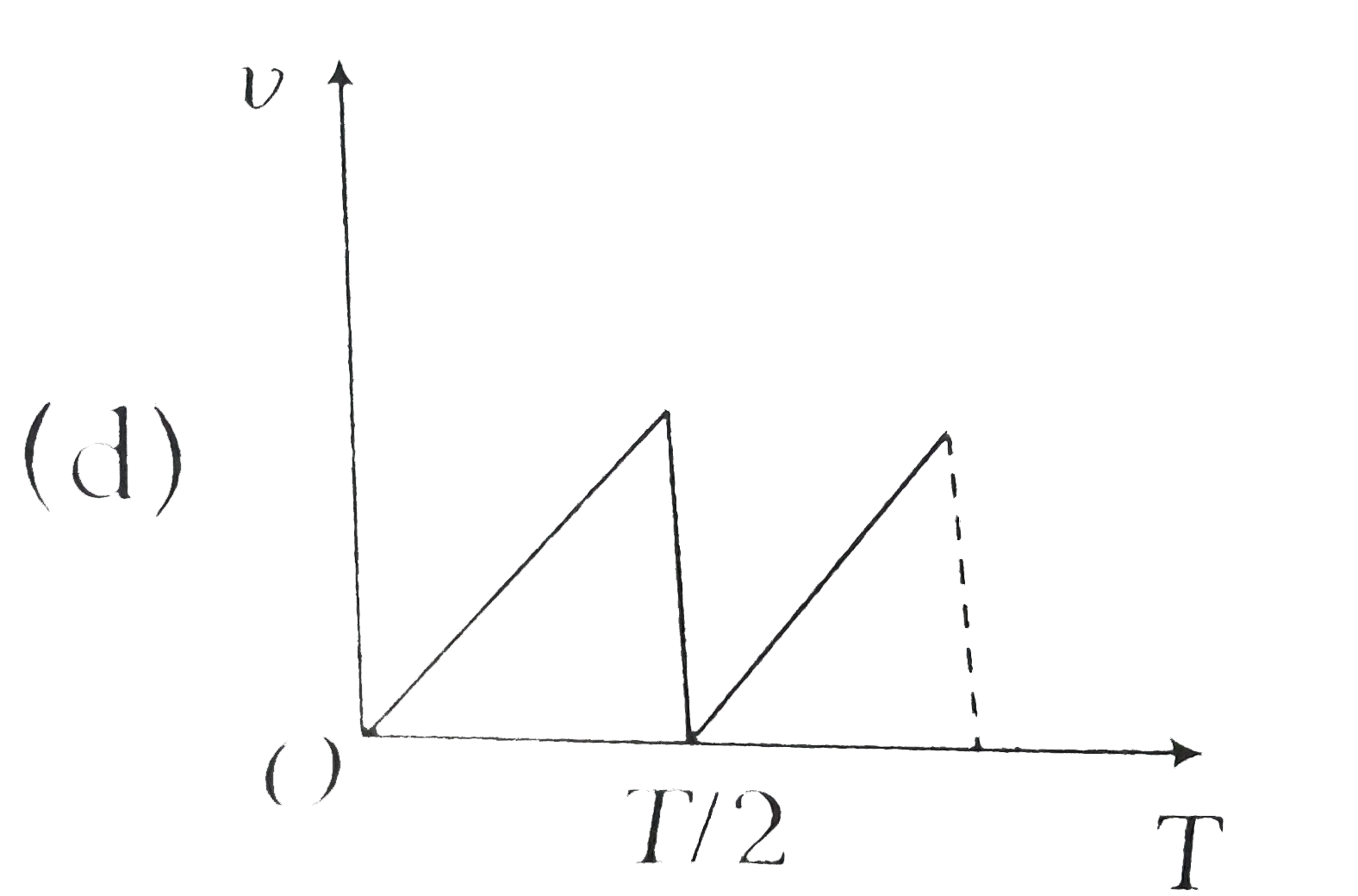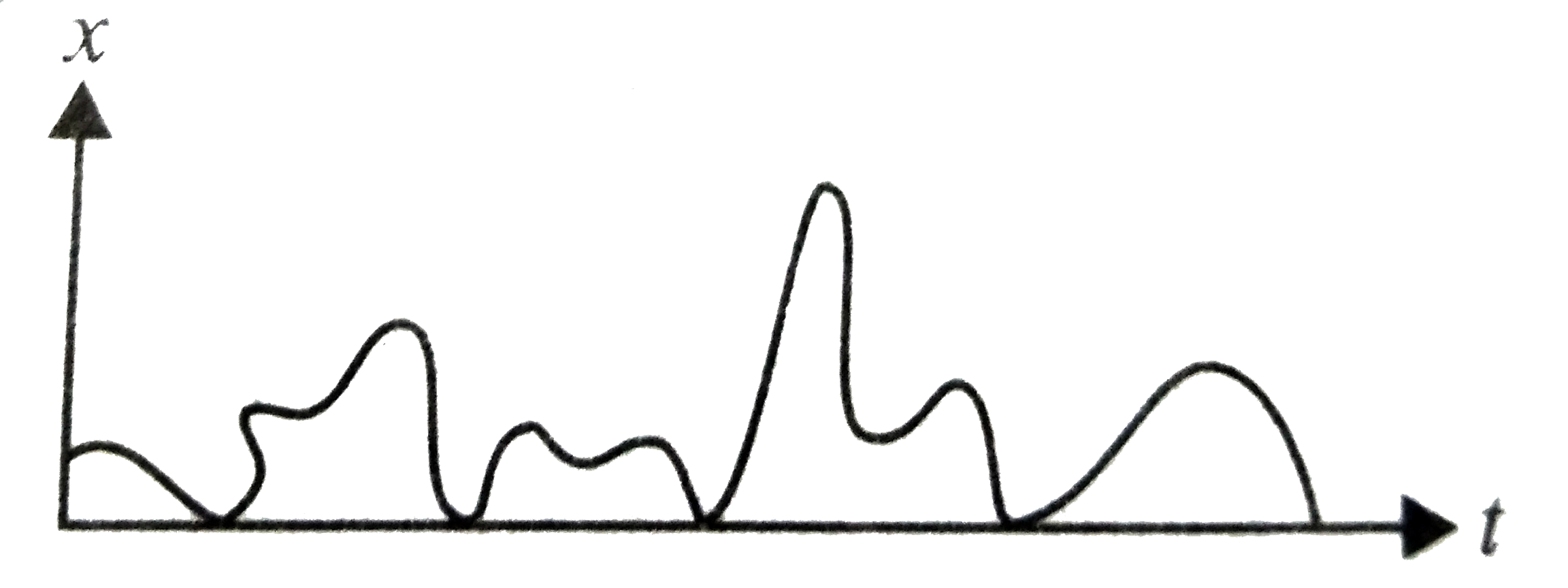A particle is thrown vertically upwards with a velocity v. It returns to the ground in time T. which of the following graphs correctly represents the motion ?




The correct Answer is:A
To solve the problem of a particle thrown vertically upwards with an initial velocity v and returning to the ground in time T, we need to analyze the motion of the particle step by step.
1. Understanding the Motion:
- When a particle is thrown upwards, it moves against the force of gravity. The initial velocity is v, and it will decelerate due to gravitational acceleration g until it reaches its maximum height.
2. Time to Reach Maximum Height:
- The time taken to reach the maximum height (where the velocity becomes zero) is given by:
tup=vg
3. Total Time of Flight:
- The total time of flight T is the time taken to go up and come back down. Since the time taken to go up is equal to the time taken to come down:
T=2⋅tup=2⋅vg
4. Velocity vs. Time Graph:
- The velocity of the particle changes over time. Initially, it starts with a positive velocity v and decreases to 0 at t=T2 (the maximum height). After that, it starts increasing in the negative direction (downwards) until it reaches the ground at t=T.
- The graph will start at v, decrease linearly to 0 at t=T2, and then linearly increase in the negative direction until it reaches −v at t=T.
5. Choosing the Correct Graph:
- The correct graph should show a linear decrease from v to 0 and then a linear increase from 0 to −v. This corresponds to a straight line that slopes downwards and then slopes upwards in the negative direction.
Conclusion:
The correct graph that represents the motion of the particle is option A, which shows the velocity decreasing to 0 and then increasing in the negative direction.
---
- When a particle is thrown upwards, it moves against the force of gravity. The initial velocity is v, and it will decelerate due to gravitational acceleration g until it reaches its maximum height.
- The time taken to reach the maximum height (where the velocity becomes zero) is given by:
tup=vg
- The total time of flight T is the time taken to go up and come back down. Since the time taken to go up is equal to the time taken to come down:
T=2⋅tup=2⋅vg
- The velocity of the particle changes over time. Initially, it starts with a positive velocity v and decreases to 0 at t=T2 (the maximum height). After that, it starts increasing in the negative direction (downwards) until it reaches the ground at t=T.
- The graph will start at v, decrease linearly to 0 at t=T2, and then linearly increase in the negative direction until it reaches −v at t=T.
- The correct graph should show a linear decrease from v to 0 and then a linear increase from 0 to −v. This corresponds to a straight line that slopes downwards and then slopes upwards in the negative direction.
The correct graph that represents the motion of the particle is option A, which shows the velocity decreasing to 0 and then increasing in the negative direction.
Topper's Solved these Questions
- MOTION IN A PLANEBOOK - DC PANDEY ENGLISHCHAPTER - MOTION IN A PLANEEXERCISE - Check point 3.7
15 Videos
- MOTION IN A PLANEBOOK - DC PANDEY ENGLISHCHAPTER - MOTION IN A PLANEEXERCISE - (A) Taking it together
75 Videos
- MOTION IN A PLANEBOOK - DC PANDEY ENGLISHCHAPTER - MOTION IN A PLANEEXERCISE - Check point 3.5
25 Videos
- MOTIONBOOK - DC PANDEY ENGLISHCHAPTER - MOTIONEXERCISE - Medical entrances gallery
19 Videos
- PROJECTILE MOTIONBOOK - DC PANDEY ENGLISHCHAPTER - PROJECTILE MOTIONEXERCISE - Level - 2 Subjective
10 Videos
Similar Questions
Knowledge Check
Which of the following x-t graphs does not represent periodic motion?
A B
B C
C D
D
From a tower of height H, a particle is thrown vertically upwards with a speed u. The time taken by the particle, to hit the ground, is n times that taken by it to reach the highest point of its path. The relation between H, u and n is:
AgH = (n−2)u2B2 gH = n2u2CgH = (n−2)2u2D2 gH = ν2(n−2)
A particle is projected vertically upward with velocity u from a point A, when it returns to the point of projection .
View SolutionA ball is thrown vertically upwards with a velocity of 10 ms−1. It returns to the ground with a velocity of 9 ms−1. If g=9.8 ms−2 , then the maximum height attained by the ball is nearly (assume air resistance to be uniform)
View SolutionA ball thrown vertically upward with initial velocity u. Which of the following graphs represent the velocity of ball correctly as function of time?
(Take upward direction as positive)
View SolutionA ball is thrown vertically upwards and its velocity v varies with time t as shown in the figure. Which of the graphs (1),(2),(3),(4) shows the correct vurve of displacement versus time ?

View SolutionA ball is thrown vertically upward with a velocity 'u' from the balloon descending with velocity v. After what time, the ball will pass by the balloon ?
View SolutionFrom a tower of height H, a particle is thrown vertically upwards with a speed u. The time taken by the particle, to hit the ground, is n times that taken by it to reach the highest point of its path. The relation between H, u and n is
View Solution
